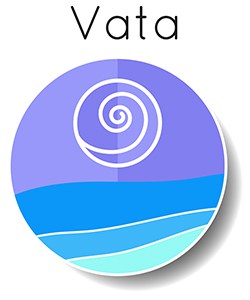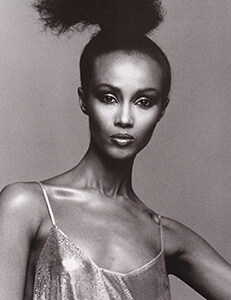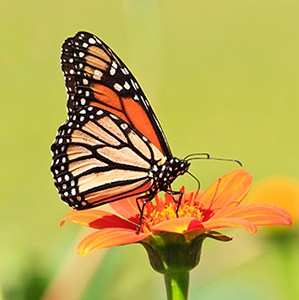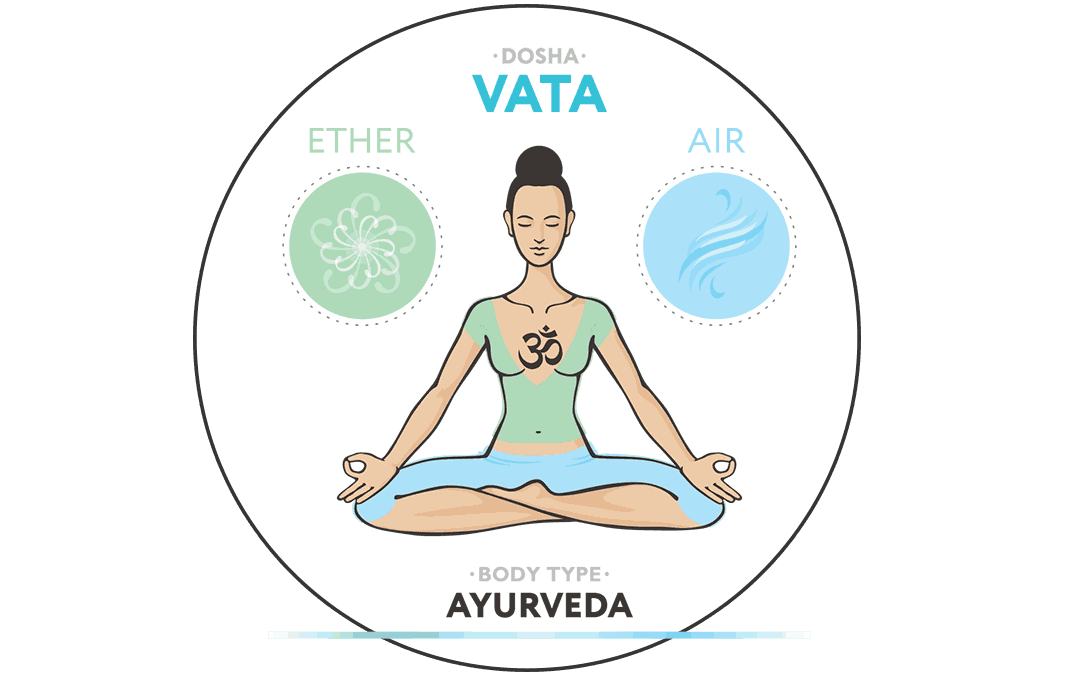Vata: Governing Flow & Movement
Personality – The Creative One
You are 100% one-of-a-kind.
Your appetite, the way you digest, your reaction to stress, the way you sleep, what you think, the emotions you experience and the way you look is completely unique. So it makes perfect sense that your physical and mental constitution plays a central role in your overall wellbeing.
In Ayurveda, we believe that your constitution is governed by three life energies that circulate throughout your whole self and influence your bodily functions, emotions, and mindset. They are called doshas (psychobiological energies) – Vata (governs movement), Pitta (governs digestion and metabolism) and Kapha (provides stability and structure).
While we need all 3 doshas to survive, and most of us have either one dominant dosha or a dominant combination of two doshas. This means that what we eat, how we live, and even how we think can determine the balance or imbalance of our doshas. When balanced, doshas cause no symptoms or disease – however when there is an imbalance (i.e. a dosha is in excess relative to our constitution), it can give rise to dis-ease.
Understanding your unique makeup will empower you to not only feel your best, but to know the foods, herbs, and self-care practices that will help address any imbalances in your body.
Let’s explore the characteristics of the Vata dosha, so that you can learn how it plays a role in your health.
Doshas are the combination of the 5 elements that are present in all of the natural world: Ether, Air, Fire, Water and Earth (click here to read more about these elements in the About Ayurveda page). Each element has it’s own set of unique qualities (light, heavy, cold, warm, moist, dry etc.).

Vata dosha is made up of the elements Air & Ether, making the overall qualities of Vata cold, light, dry, rough, irregular, mobile, quick, and changeable.
Vata governs all movement in the body from the flow of your breath to the beating of your heart to all of the muscle contractions and tissue movements to cellular mobility and communication throughout the mind and nervous system.
Physical Characteristics:
Those with a predominance of Vata dosha have a light frame and are either short or tall. They have an oval shaped face and smaller facial features. They have long necks and fingers. They typically have dry skin, hair, and nails. Here are some Vata celebrities !
Those with a predominance of Vata dosha have a light frame and are either short or tall. They have an oval shaped face and smaller facial features. They have long necks and fingers. They typically have dry skin, hair, and nails. Here are some Vata celebrities !



Functional characteristics:
Vata types tend to have a variable appetite, sensitive digestion, and a tendency towards gas and constipation. They are fast talkers and light sleepers. They often have cold hands and feet and hence prefer warm and tropical climates. Their energy comes in bursts, so they are likely to experience bouts of fatigue. When Vata becomes imbalanced (i.e. in excess), it can manifest in the body as gas and bloating, constipation, weight loss, pain, arthritis, weakness, fatigue, tremors and restlessness. All nervous system disorders also have their roots in Vata imbalance.
Emotional Characteristics:
Vata types tend to be energetic, lively, creative, artistic, adaptable, alert, enthusiastic and compassionate. They are the creative, independent types. Think of them as the ‘social butterflies’ and the ‘life of the party’. Their heightened intuitive abilities make them good clairvoyants and psychics. Vata types love excitement and new experiences. They are quick to anger but also to forgive. They learn quickly but forget easily. When Vata becomes imbalanced (i.e. in excess), one is prone to worry, overwhelm, anxiety and fear. One becomes disorganized, moody and impatient, and often suffers from insomnia.
The animal world Vata archetypes according to the ancient Ayurveda texts are the butterfly and the bumble bee!


Keys to Balancing Vata:
Ayurvedic healing rests on this simple yet profound principle – “Opposites decrease each other” or as Hippocrates so poetically put it, “Opposites are the cure for opposites.” For Vata imbalances, the qualities that are in excess (or imbalanced) are light, cold, dry, and mobile. The way to bring balance back is through heavy, warm, moist, mildly-spiced nourishing and grounding foods, performing grounding practices such as self-massage with warm medicated oils and establishing stable routines, especially around meal-times and sleep. Lastly, cultivating faith is an important way to balance the anxiety and fear that Vata can bring to the mind.
Want to discover your unique constitutional blueprint and your very own customized Ayurveda Health Lifestyle protocol?
I Educate and Empower People from All Walks of Life Who Want to Live in "Perfect Health" - Mind, Body and Spirit.
The information in this article is intended for informational and educational use only; It is not a substitute for professional medical advice, diagnosis, or treatment. Always seek the advice of your physician or other qualified health providers with any questions you may have regarding a medical condition and before undertaking any diet, foods, supplements, fitness, or other health programs.




